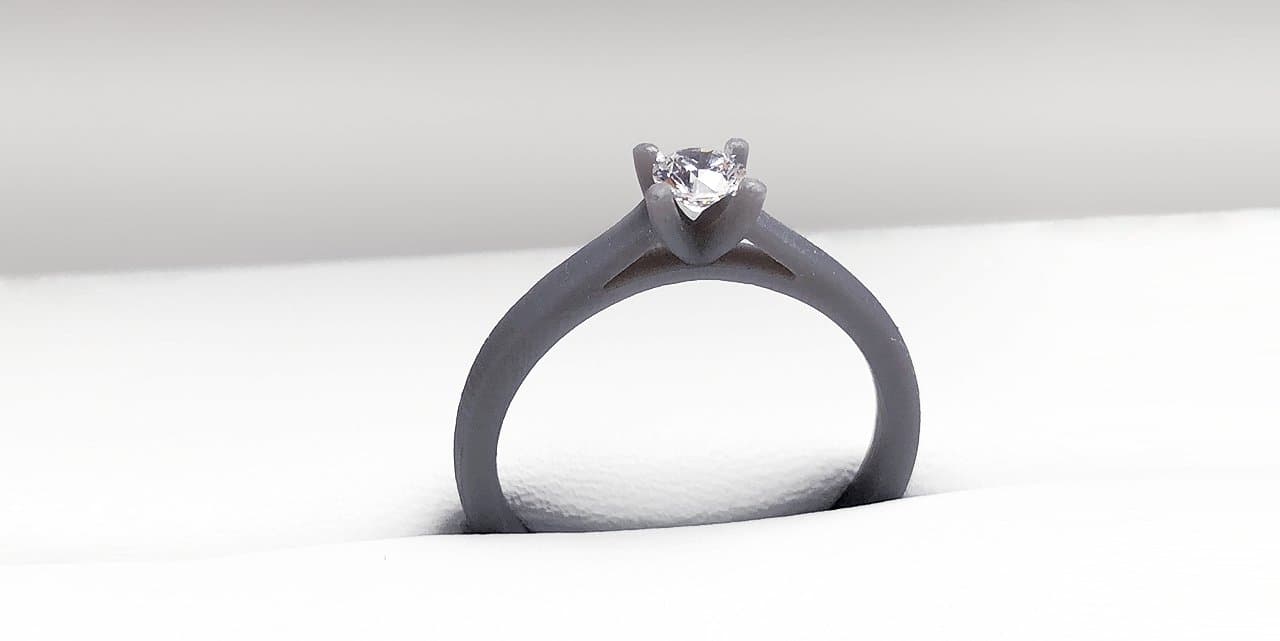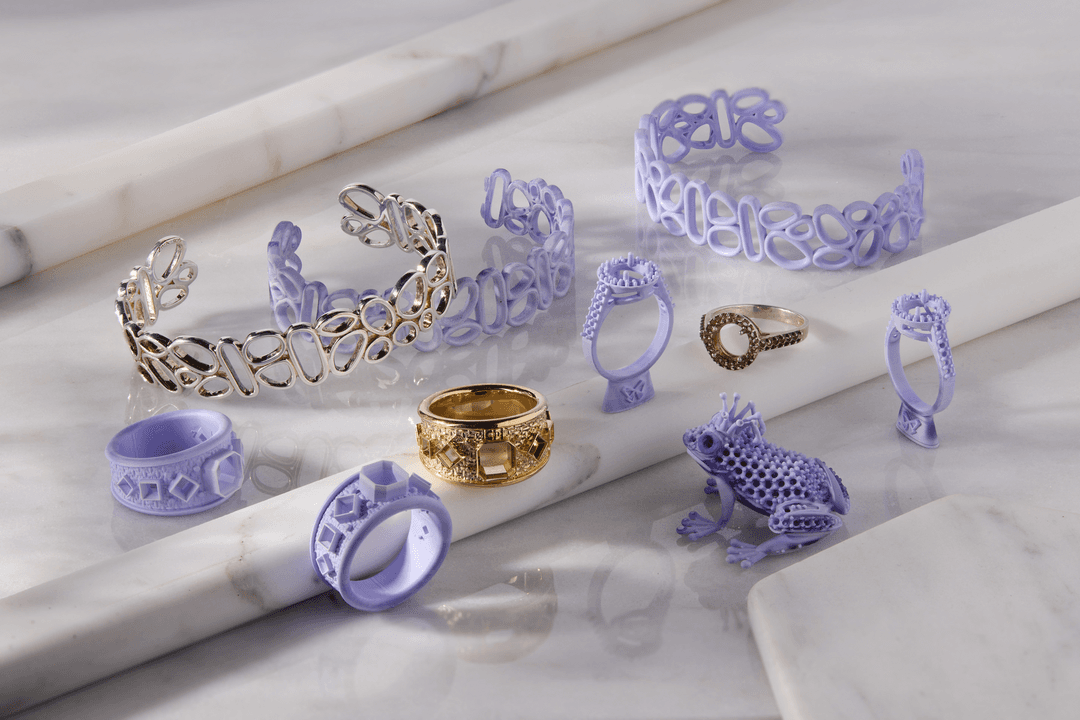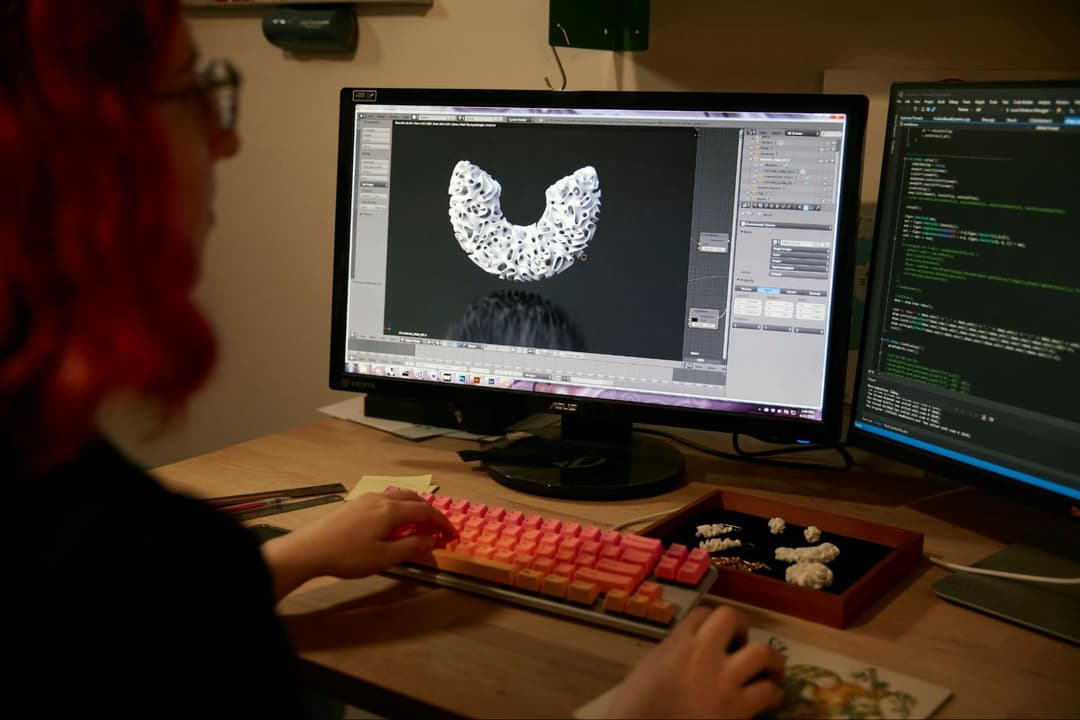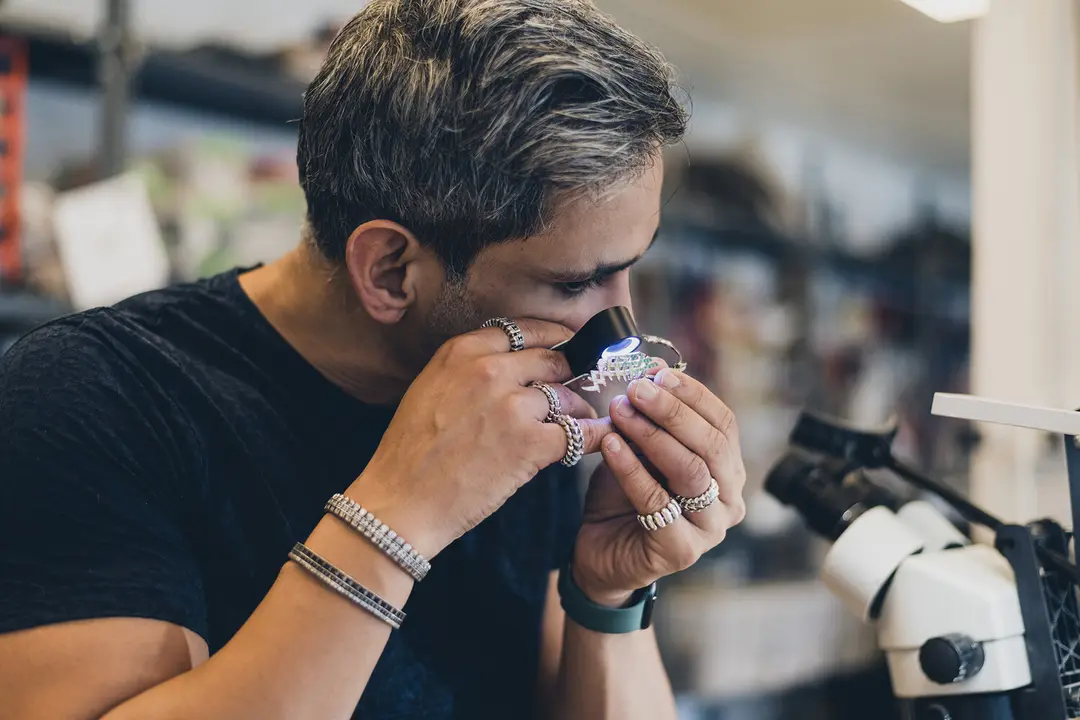
A customer walks into your retail store, and describes their perfect engagement ring. You discuss the design together, and an hour later, you’re holding a real, physical model of the ring.
This scenario is not a vision of the future, but today’s reality. In a landscape of custom products, a standard engagement ring often doesn't suffice. For the first time in Europe, a leading engagement ring brand is bringing 3D printing technology to the customer experience for on-site, consumer-facing jewelry customization.
Elevating Customer Experience With On-Site Digital Tools
Founded in 1933, leading German wedding ring manufacturer egf Manufaktur is shortening the feedback loop between designer and customer tenfold, blending a custom software solution with desktop digital fabrication to create a modern, highly personal customer experience.
“Every wedding ring is individualized and made-to-order. They’re more important than any other jewelry product in showing the customer’s individual ideas,” said Nick-Maximilian Binder, assistant to the managing director at egf, and leader of the on-site 3D printing project.
“That's why it only makes sense to configure a ring in CAD software, print in 3D, and give it to the customer before the ring is hand-crafted by the goldsmith. We find that customers want to modify the original ring to make it either thicker or narrower, or with varying stone settings.”
To get up and running with little experience in 3D printing, egf turned to Formlabs Form 2 desktop 3D printer.
“The Form 2 excited us the most with its speed—less than one hour for printing our rings, the high quality its resins, and ease of use,” Binder said.
The company customized their CAD software so that employees, seated next to the prospective customer, can easily make adjustments to pre-loaded engagement ring designs without formal CAD training.
Once the customer is happy with a design, egf sends the file to Formlabs PreForm print preparation software, and prepares the part to be 3D printed on the Form 2 with Formlabs Grey Resin. Within an hour, the parts are printed, post-processed with Form Wash for a few minutes, and lightly finished if needed (support removal and sanding).
The sleek, finished prototype is then ready to show the customer, who can physically inspect and try on their ring during just one consultation appointment. In a retail setting where time is of the essence, egf can accelerate the sale with on-demand customization and customer communication.

3D Printing in an Evolving Jewelry Industry
Jewelry brands originally focused on bespoke and handcraft pieces, drawing designs and crafting maquettes in wax before making short-run productions of parts, but the industry is shifting toward digital, combining emerging tools with traditional processes
With advances in 3D printing technology, major jewelry retailers and brands have realized the benefits of transitioning to a CAD-to-3D print model, which has brought new collections to market more quickly and affordably than ever before.
“Something new is always uncomfortable, because you first have to get used to it. The jewelry industry is very classic and often stores have been run for two to three generations. It was a big change when the configurators came in the early 2000s, and many wondered at the time: do we need that? We can imagine 3D printing is similar, and can also prove itself over time,” Binder said.
“Now, jewelers have been working with configurators for years. 3D printing and CAD software is just a slightly different interface to get used to. No training is required and the unit can be set up in five minutes.”
From Prototyping to Customer Customization
Using 3D printing to prototype is not a new phenomena for the jewelry world. In Canada, Davidson & Co makes engagement ring maquettes with Formlabs Black Resin, and at Denmark’s Copenhagen School of Design & Technology (KEA), students use Formlabs Grey Resin in addition to Formlabs Castable Resin to validate design projects and learn how to set up their own jewelry design business.
Learn from experts: watch our webinar with Zina Sterling Silver to learn the basics of CAD and 3D printing for jewelry, and how to improve costs and save time in prototyping jewelry designs.

However, we see a shift from designers prototyping jewelry for their individual collections to allowing customers to participate in the customization process. Larger manufacturing brands can now give the customer the power to quickly realize their ideas in real time, fusing the design process between jeweler and customer and opening up greater possibilities for the jewelry industry.
“We’re always trying to discover trends early on. From our point of view, 3D printing is an enormously important topic, which will still move a lot in the jewelry industry and will change it for the better for our customers,” Binder said.
“For example, 3D printed prototypes and visualization aids—this is a completely different, modern shopping experience and brings the product closer to the customer. Informing customers about the possibilities of the Form 2 to customize and have a hand at the creative process helps us gain feedback on which designs look best and which are more successful in the end. The customers also give feedback about their experience with the on-demand creative process. In the short to medium term, we see possibilities of visualization and thus an even higher quality of end-customization for the customer.”
Discover 3D Printing for Personalized Jewelry
Over the past several years, jewelry applications in desktop 3D printing have rapidly taken off. Download our tip sheet for selling custom jewelry with 3D printing to learn more about leveraging 3D printing to create and sell custom designs, or watch our webinar with leading CAD software 3Design and designer Andrew Goldstein from Zina Sterling Silver to get started with the basics of a digital prototyping and production ecosystem.


